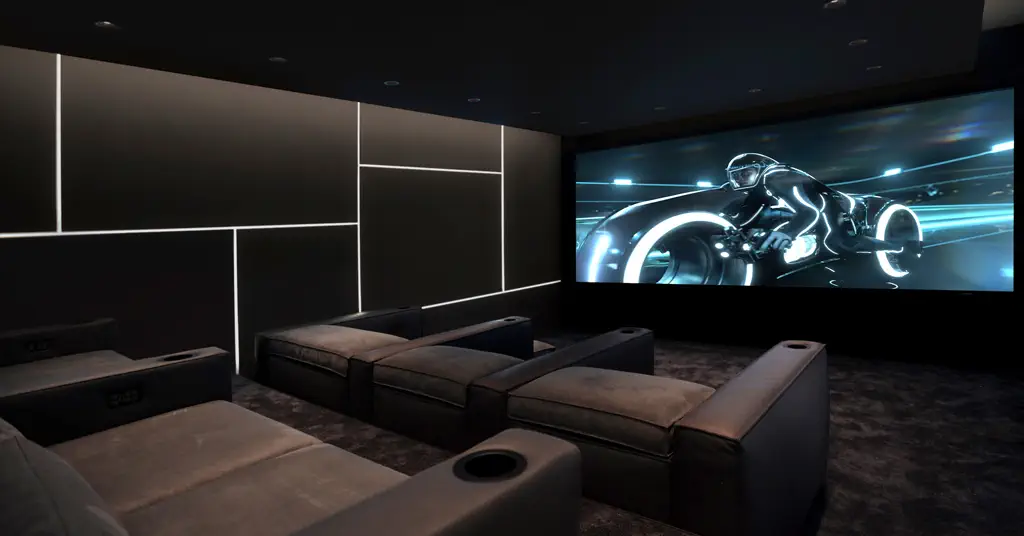The impact of screen refresh rate on home theater LED screen picture quality
The refresh rate of the home theater LED screen is the parameter index of the device itself, and the frame change frequency is the attribute of the video file itself. The higher the refresh rate, the lower the flickering of the picture and the higher the image clarity. Conversely, the lower the refresh rate, the flickering and jittering phenomenon may appear on the screen. In this article, we will explore the effect of LED screen refresh rate on image quality. From the concept of basic refresh rate to the impact on picture clarity and motion smoothness, we will help you optimize your viewing experience to the greatest extent.
Table of Contents

What is the refresh rate of the LED screen?
The screen refresh rate refers to the number of times the image of the LED screen is refreshed per second, and it is measured in Hertz. It is worth noting that LED screen refresh rate is easily confused with FPS (frames per second). Screen refresh rate is closely related to FPS in video content. Ideally, the LED screen refresh rate should match or exceed the FPS value.
The screen refresh rate used by the conventional home theater LED screen is 60Hz, which means that the LED screen will be refreshed 60 times per second. However, with the continuous advancement of technology, the conventional 60Hz LED screen can no longer meet the playback requirements of high-definition video sources. The refresh rate of home theater LED screen is constantly improving.
The effect of refresh rate on picture clarity
Reduce motion blur
A higher screen refresh rate helps reduce motion blur on screen content, ensuring clearer images. Especially in some sports programs, such as football or basketball live broadcasts, fast-paced sports images can see every movement detail at a high refresh rate.
Enhanced detail preservation
A higher screen refresh rate helps preserve finer details in video images for a more vivid and lifelike viewing experience. Avatar movies are watched at 60hz and 120hz refresh rates, and you will find more video details at 120hz refresh rates.
Smoothness in slow motion scenes
A LED screen with a high refresh rate can make slow-motion scenes even more fascinating, as each frame is displayed with greater precision and smoothness. Just imagine the slow motion of Keanu Reeves dodging bullets in The Matrix, what kind of shocking scene it is to watch at a high refresh rate.
Link between LED screen refresh rate and motion smoothness
Eliminate stuttering and jitter
A higher refresh rate minimizes stuttering and juddering, creating fluid motion on the screen. This is especially beneficial for game lovers or those who like action-packed movies.
Sync with Graphics Processing Unit (GPU)
Modern GPUs often support high refresh rates, allowing for seamless synchronization between the screen and the GPU, resulting in a smoother viewing experience.
Balance between refresh rate and content
While motion-intensive content requires a higher refresh rate, some movies or shows may be intentionally shot at a lower frame rate. In this case, adjusting the screen refresh rate accordingly can help strike the right balance.
FAQs About LED screen refresh
Yes, the refresh rate impacts picture quality on all LED screens, although the extent of the impact may vary depending on the quality and capabilities of the specific screen.
Unfortunately, the refresh rate is a fixed characteristic of an LED screen and cannot be upgraded. To enjoy a higher refresh rate, you may need to invest in a new screen with the desired specifications.
For most home theater setups, a refresh rate of 120Hz or higher is recommended to achieve optimal picture quality and motion smoothness.
While higher refresh rates offer numerous benefits, they may come with a higher price tag. Additionally, not all content is optimized for higher refresh rates, which means that the visual improvements may not be noticeable in every situation.
Yes, the difference between refresh rates is generally noticeable, especially when viewing fast-paced content or engaging in gaming. However, individual perception may vary, and some people may be more sensitive to visual changes than others.
Others also read the following article
Want to know more about the Audio Visual Solutions?
